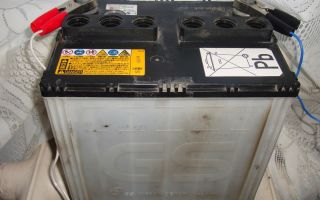Battery for Toyota Corolla: selection, replacement, alternative to the standard battery, reviews
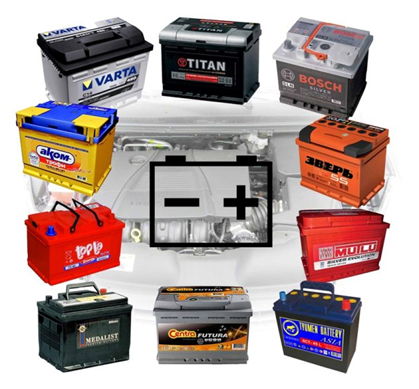
16.01.2017
Toyota Corolla is a class C car produced by Toyota Corporation since 1966.
In 2016, the Corolla brand turned 50 years old, during which 12 generations of these reliable cars have changed, and the total Corolla production volume is more than 40 million.
Corolla has become Toyota's most successful model and ranks 1st in the list of best-selling cars in the world. Toyota Corollas with 1.3 liter 2NZ-FE petrol engines (99 hp) are presented in Ukraine.
) as well as 1.6 l 1ZR-FE (122 hp).
From the assembly line under the hood of the Corolla there are batteries from Japanese brands: Panasonic, Yuasa, FB. In Ukraine, it is quite difficult to obtain a similar “standard” battery. But you can buy batteries from equally well-known brands: Varta, Rocket, Bosch, Berga, Mutlu.
In Toyota Corolla you can find batteries in two sizes: 238x129x223 mm and 230x175x223 mm for 45 Ah and 60 Ah. The place for the battery in Toyota Corolla has been the same for 12 generations: in the engine compartment near the left headlight. The polarity of the battery on the Corolla is reversed, i.e. batteries with the right “plus”.
When choosing a battery for a Toyota Corolla, you need to know:
– a Japanese car uses a Japanese JIS (Asian) standard battery;
– all Toyota batteries have reverse polarity (right plus);
– standard batteries, depending on the equipment of the machine, come in two sizes: 45Ah (239x129x225 mm) and 60Ah (230x175x225 mm)
– the bottom side is optional: it is not used for fastening the battery in Japanese cars
Japanese engineers do not like to use large batteries in their cars. Quite often, even in Japanese SUVs and premium sedans, a small battery with a capacity of 40-45Ah and a starting current of 300 Amperes is installed.
However, in Ukraine, such batteries do not withstand winter well: the capacity reserve is too small. Another reason for their unpopularity is the higher price than for a 60 Ah battery with a size of 242x175x190 mm.
The good news is that when replacing the battery in a Corolla, instead of the standard thin 45Ah (239x129x225 mm), a European standard 60Ah battery (242x175x190 mm) is placed.
Battery models for Toyota Corolla:
Rocket SMF 75B24LS 55Ah 470 A 239*129*225
Rocket SMF 75D23L 65Ah 580 A 230*173*225
A-Mega Ultra 62 Ah 610 A 242*175*190 3 year warranty (alternative)
Varta Blue Dynamic (D47) 60 Ah 540 A 230*175*222
Replacing the battery on a Toyota Corolla
Removal : 1. Using a “10” key, we loosen the terminals: first the negative one, then the positive one, and remove them in the same sequence. 2. Using a wrench or a 10mm socket, loosen the nuts of the pressure plate.3. Remove the clamping bar.
4. Remove the old battery.
Installation :1. We install a new battery.2. We put the clamping bar in place. 3. We put on the terminals: first “plus”, then “minus”. Using a “10” wrench, tighten the nuts on the terminals.
4. Use a wrench or a 10mm socket to tighten the pressure plate nuts.
Important! In some cases, a temporary loss of power when replacing the battery can block the radio. You need an activation code to enable it again.
At the time of replacement, in a Toyota of any modification, nothing more than a normal reset of the stored values in the control unit occurs.
After a few hours of vehicle operation, new data will be written to the RAM of the control unit.
Source: https://www.oil-ok.com.ua/blog/Battery-in-the-Toyota-Corolla-selection-replacement-alternative-to-standard-batteries-reviews
Batteries for Toyota
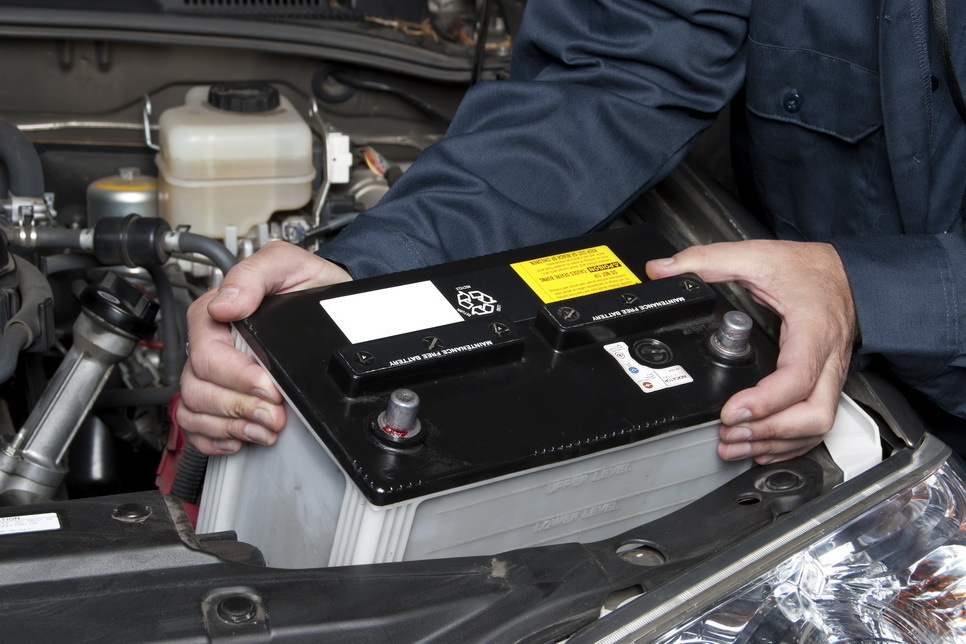
The battery performs two important functions - it starts the car's engine and provides energy to the entire electrical system when the engine is turned off or idling.
Therefore, it is very important that the battery installed in the car has sufficient capacity, withstands a large number of recharge cycles, retains its charge well and can withstand large temperature changes.
The BatteryMart online store offers a wide range of batteries for Toyota from the world's largest manufacturers, such as Bosch, Varta, Exide. The products of these brands are distinguished by high quality workmanship, affordable cost, long service life and excellent technical and operational characteristics.
| 4 |
|
| A |
|
| E |
|
| F |
|
| I |
|
| K |
|
| N |
|
| R |
|
| T |
|
| U |
|
| W |
|
Sort by:
Price
Capacities
Toku
Today there are many companies and organizations on the market offering to purchase a battery for Toyota. What is the advantage of the BatteryMart online store, and why is it best to buy a battery for Toyota from us?
We will try to list the main reasons why our store has become so popular and in demand:
- firstly, we are official partners of the world's most famous brands Bosch, Varta, Exide, therefore our prices for Toyota batteries are among the lowest on the market;
- secondly, our catalog contains hundreds of battery models, differing in size, capacity, starting current, manufacturing technology and many other important parameters, so with us you can easily find a suitable battery for any make and model of car made in America, Europe, Russia or Asia ;
- thirdly, we provide a long warranty (24 months) for each Toyota battery, so you can replace it at any time if it turns out to be faulty and cannot withstand use during this time;
- fourthly, we promptly process all requests received by us and will deliver your order within one day after contacting our online store.
In addition, we employ only qualified, knowledgeable and polite employees who are always ready to help you in choosing and processing goods. Order a battery for Toyota in our online store and see for yourself!
Source: http://batterymart.ru/akkumulyatory/cars/toyota/corolla-khetchbek-ix-e120-1479/
Batteries for Toyota
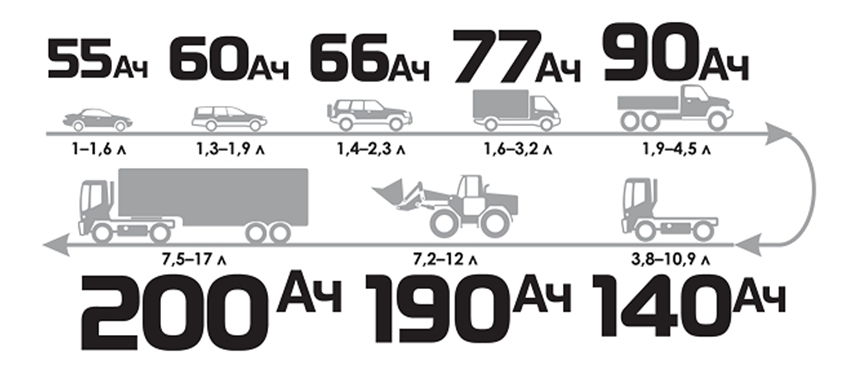
Today, the largest Japanese automobile manufacturing corporation, Toyota, produces about 70 different car models around the world.
Therefore, depending on the region where the car is assembled, a battery from FURUKAWA BATTERY, Johnson Controls (VARTA), Exide Technologies or other high-tech production plants may be installed on the assembly line under the Toyota hood.
At the same time, the same model, for example Auris, depending on the country of manufacture, can have different types of batteries installed. Not only the containers differ, but also the sizes and mounting methods.
The most popular models are Toyota Corolla, Prius, Camry, Avensis.
What do you need to know to choose a battery for Toyota?
Information about which battery needs to be installed under the hood of your car can be found in the owner's manual.
It is important to note that if your Toyota is Japanese-made, then you will see recommendations in accordance with JIS standards. These values differ from the designations on European batteries (EN).
The following table shows the sizes of the main types of batteries for Toyota assembled in Japan.
The L or R designation in the battery type indicates the polarity of the battery (L-reverse, R-straight). Also pay attention to the following points:
- For type 46B24L(R) batteries, conical terminals can be of two sizes: “narrow terminals” (T1) 12.7mm (+) and 11.1mm (-); “standard terminals” (T2) 19.5mm (+) and 17.9mm (-). The rest of the batteries listed in the table are manufactured for the T2 terminal type, the thickness of their cones corresponds to the European standard.
- If your Toyota has two batteries, they probably have different polarities. For example, the Land Cruiser Prado may have a pair of 80D26L+80D26R.
If your Toyota is not made in Japan, but, for example, in England. Then under the hood you will find a battery in a European type housing. The following table shows the standard sizes for European batteries and their corresponding capacities.
To understand what kind of battery you need, you can use the battery selection catalog by car brand. However, it is better to make sure you make the right choice by looking under the hood and measuring the dimensions of the battery.
Which container should you choose?
Since one battery size can correspond to several capacity options, the question arises which capacity is better. In such cases, the previously mentioned leading battery manufacturers suggest, if possible, choosing a larger capacity.
That is why, instead of an old 55Ah battery, you can be offered a 60Ah battery in the same dimensions. This small capacity reserve makes it easier to cope with loads, providing additional reserve and increasing battery life by 10-15%.
What current should the battery have on a Toyota?
Toyota's lineup includes all kinds of car classes. And the batteries, accordingly, can also be of different levels. Still, there are general recommendations:
Toyotas are equipped with maintenance-free batteries of medium and premium class.
Do not chase high inrush currents. In modern cars, battery capacity is a priority, since their starters do not require high currents to start. However, the starting characteristics can be used to judge the level and quality of the battery.
Examples with car characteristics
Recommended battery brands for Toyota
Among the wide variety presented in the World of Batteries store, we advise you to pay attention to the batteries of the following brands:
- Tudor High-Tech, Exide Technologies
- Bosch
- Varta
- Afa plus
Selection by car
Source: http://www.akbtv.ru/toyota/
14.29 Battery
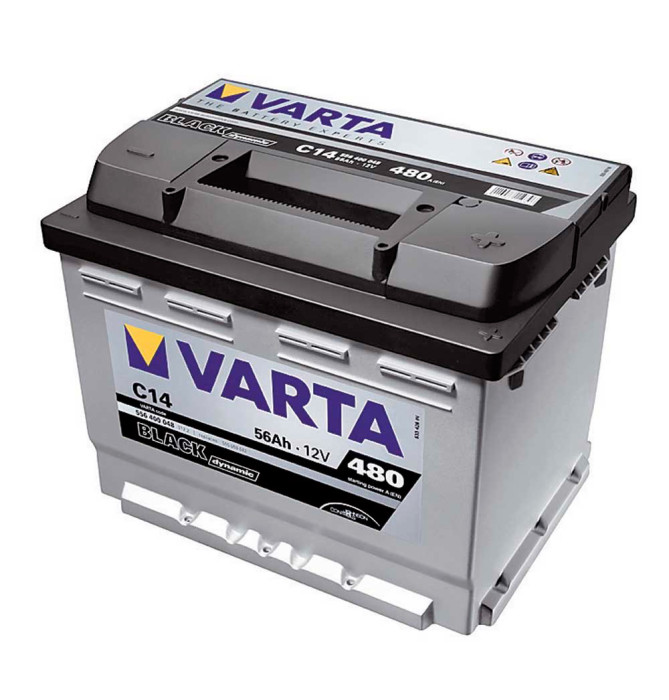
What is a battery?
A battery is a device for storing energy in chemical form that can be used as electricity.
The battery works by combining two different metals in an acidic solution to produce electricity.
Main indicators of batteries
Below are some important facts about batteries that will help you and your customers choose the right battery for your car.
The battery is 100% efficient at 27° C. At -18° C, the efficiency of the same battery drops to 40%. Now, in order to start the engine, you need to have more than twice as much energy as was needed at 27° C. Emphasize this important factor to your customers. Point out the need for larger batteries, especially in cold climates.
Starting power (cranking amps) measures the battery's ability to start a vehicle in very cold weather conditions. It shows the number of amps that the battery produces for 30 seconds at -18° C without the voltage dropping below 7.2 volts (the minimum level required for a reliable start). The higher this indicator, the greater the starting power of the battery.
Reserve power indicates the length of time in minutes that the battery provides 25 amps at 27° C. This factor represents the time during which the battery can operate all auxiliary devices in the vehicle at night and in bad weather conditions when the charge generator is faulty.
Cold weather performance
In winter conditions at -18° C and below, the battery will not charge well due to an increase in internal resistance. During short trips in winter, the energy spent by the battery on starting is not compensated. As a result, the battery wears out, is constantly discharged and eventually fails.
“Hot start”
During the summer months, after long trips, the engine becomes very hot and it is often difficult to start again. These “hot starts” sometimes require as much power as in cold weather, or more.
This especially applies to high-compression, large-displacement engines and vehicles with air conditioning. This once again emphasizes the importance of choosing the right battery according to the car's engine.
How to choose the right battery?
Probably, every motorist comes to a point when tinkering with the old battery becomes too troublesome. Especially if it’s winter and there are bitter frosts.
Constant problems with starting the engine, endless “home” recharges and the fear that the crumbling active mass will short-circuit the plates at the most inopportune moment, after which you will be dragged home from some intersection in tow.
The conclusion suggests itself: a new battery is needed. But which one?
All starter batteries are divided into three categories: serviceable, or repairable; low maintenance; unattended.
Serviceable batteries are still on sale, although ten years ago they made up almost the absolute majority. Now they are produced only by a few Russian factories, and even in several countries of the former socialist camp.
They are easily recognized by their ebonite body and black mastic, which is poured on top. Such a battery makes it possible to change a block of plates of one or more cans if a short circuit occurs between the plates. But the vast majority will not do this.
In addition, the ebonite case, which is more expensive to produce, is less durable than a plastic one and breaks apart upon impact.
Mastic also has a significant drawback - over time, due to dirt and temperature changes, it loses its insulating properties, which is why the battery begins to spontaneously discharge very quickly.
The owner of a maintenance-free battery is simply unable to do anything with it: there are no holes or filler plugs on the cover of such a battery. These are special batteries designed for certain (read: ideal) operating conditions with a mild climate and well-functioning service. They are very expensive and are not suitable for use on all cars.
Most car batteries produced around the world are low-maintenance. They do not have such strict restrictions in operation and are widely represented on the market, from relatively cheap and simple to expensive, high-quality and literally packed with modern technologies.
Let's say you decide to buy a battery, but where and what kind? First - where. It is best to go to a reputable company, where they will quickly find you what you need. Now - which one? We will not advise anything specific, we will only give some recommendations.
The prestige and fame of a particular brand of batteries are decisive when purchasing, but some technical points must also be taken into account. Of course, the chemical composition of the plates or the technology for their manufacture is hardly known to the seller. And does the buyer need this? It's better to pay attention to what you can see for yourself.
For example, stacked plates (each plate is packed in a microporous separator envelope), which prevent short circuits between them due to shedding of the active mass and, accordingly, extend the “life” of the battery. Such bags are clearly visible if you open the filler plug. Pay attention to traffic jams too.
It is known that when charging a battery, water from the electrolyte evaporates and, during electrolysis, decomposes into hydrogen and oxygen.
To prevent the battery from exploding, a small hole is made in the plugs on the side or top to allow gases to escape. In the simplest (and cheapest) batteries, they simply make a small hole, which can quickly become clogged with dirt.
In more expensive ones, the plugs are made like a valve that prevents the electrolyte from splashing out, with a cavity for the condensation of vapors.
It is best if the plugs do not have holes, and the battery cover has a system of cavities for water condensation, as well as a single gas outlet channel, as in maintenance-free batteries.
Low-maintenance batteries are supplied by manufacturers either dry-charged (like most serviceable ones) or filled with electrolyte at the factory. If you are buying a battery for future use, it is better to buy a dry charged one: it has a long shelf life.
In order to bring them into working condition, you need to fill in the electrolyte. Factory filled batteries are ready for use.
The electrolyte for them is prepared by specialists from high-quality components and contains many (sometimes more than twenty) additives that prevent sulfation, shedding of the active mass, etc.
It must be said that special modifiers have appeared on sale, allegedly containing such additives, but they do not inspire confidence. There is another advantage to flooded batteries. Before entering the retail chain, they are subjected to special charging with parameters controlled using special equipment. This makes it much easier to identify low-quality batteries.
Probably the most important thing a buyer should pay attention to is the battery characteristics. There are three of them. The first is the nominal voltage, it is the same for all batteries, and it is impossible to make a mistake. When purchasing, it is advisable to check the battery with a load fork.
The second is capacity, measured in ampere/hours (A/h), which means, roughly speaking, the amount of electricity stored in the battery. The capacity determines how long you can turn the engine with the starter, or more precisely, how many attempts you can make to start the engine. The price of a battery is almost directly proportional to its capacity.
And the third characteristic is the starting current (measured in amperes. A), i.e. the current supplied to the starter during starting. On batteries it can be indicated according to four different systems: GOST (for domestic ones), EN (United Europe standard), SAE (American standard) and DIN.
The last, German standard, is closest to our GOST and is installed “by default” on most European batteries, that is, when the standard system is not specified. The larger it is, the faster and with more force the starter will crank the engine.
It is better if you buy a battery with the characteristics specified in the operating instructions for your car: this way it will last you longer at minimal cost.
You can save money and buy a battery with a smaller capacity, but it will serve you less than usual and will not cope well with winter starting. By purchasing a battery with even a slightly larger capacity, you will not gain in service life, because... Constantly undercharging the battery will lead to sulfation of the plates, and you will lose money.
You should also not get carried away with increased starting current: you will burn the starter. Better change the engine oil, and there will be no problems with starting.
Recently, the country's market has been overflowing with low-quality goods and counterfeits. Batteries are no exception. There are several signs by which you can accurately distinguish an original from a fake.
First and, perhaps, most importantly: the country of manufacture and the manufacturing plant must be indicated on the battery, preferably with an address. Secondly, the date of manufacture must be indicated, which is very important if the battery is flooded.
Each battery must be accompanied by a technical passport, but instructions are not required. This is due to the fact that in the West batteries are almost never sold at retail; they are installed by specialists at service stations.
Third, a high-quality battery is unthinkable without a high-quality case, good plugs and smooth output terminals, often lubricated with a technical protective grease against oxidation and covered with colored plastic caps.
“Amp” load
The main task of the battery is to supply current to start the engine. The current required to crank a cold engine varies from vehicle to vehicle.
It depends on the piston stroke and bore, number of cylinders, engine/starter cranking ratio, circuit resistance, temperature, engine oil viscosity and accessory load.
A four-cylinder engine may require the same amount of cranking current as a larger-displacement eight-cylinder engine. When original battery equipment is matched to a vehicle, all these factors are taken into account.
The second purpose of the battery is to meet the vehicle's load requirements when they exceed the charging system's ability to supply energy. The charging system can withstand the electrical load under normal driving conditions.
However, if the engine is idling, the battery can provide some energy for the auxiliary devices. This occurs when driving around the city with constant stops and restarts with normal load of auxiliary devices.
The battery must replenish the vehicle's electrical load if the charging system fails.
When replacing a car battery, use one equivalent to the original battery. Use a larger capacity battery if a higher reliability factor is required.
The third purpose of the battery is to act as a voltage stabilizer in the charging system. From time to time very high transient voltages are generated in the electrical system.
This can occur when a circuit is shorted or opened, etc. The battery partially absorbs and significantly smooths out these peak voltages and protects the semiconductor components from failure.
Take care of your battery!
The colder it is outside, the more problems drivers have. One of the main ones is how to start the engine in the cold. And here, first of all, the battery makes itself felt. This is where the greatest load falls in the cold: starting the engine requires much more effort.
In order for the starter to turn the crankshaft of a cold engine, the battery needs to provide significantly more energy. At the same time, do not forget that the restoration of battery performance does not occur instantly, but after some time: the electrolyte, thickened in the cold, slowly penetrates into the plates.
That is why it is recommended to try to start the engine again only after a few minutes. In addition, in cold weather the battery discharges very quickly when the starter is running.
Some drivers, trying to start a “frozen” engine, continuously turn the starter over and over again. As a result of this violence, the battery very quickly “dies” - completely and irrevocably: the battery plates, unable to withstand excessive loads, begin to warp and crumble.
Apparently, there is no need to talk about the need for regular battery care, that you need to check the electrolyte level in the jars at least once a week and, if necessary, add distilled water.
If the battery is maintenance-free, there are fewer worries.
But you still have to pay attention - the tension of the drive belt should be checked periodically, and at the first signs of a decrease in power, the battery must be recharged.
And now we will talk about how to quickly and least painlessly start the engine in the cold for the battery.
First - the obvious. Change the oil to winter oil in a timely manner. It’s better to buy imported ones, because ours (including packaged ones) often have the unpleasant feature of turning into jelly in the cold or completely freezing. Not to mention how such oil will lubricate engine parts, the battery will have a very hard time with it and its days will be numbered.
Second - candles. It is better to install new ones for the winter. But this is a theory, but in practice factors such as “frugality” or the lack of them at hand at the right time often come into force. Because while the engine starts normally, many people don’t even remember that there are spark plugs in the engine...
If the spark plugs are still old, install the required gap in them, which is constantly increasing due to burning of the electrodes. It’s better to do this ahead of time, otherwise you’ll have to fumble around when you need to go.
As a last resort, if the engine does not start, the gap can be set less than recommended, but in this case the electrodes will burn even faster.
In severe frosts, before turning on the starter, “warm up” the battery - turn on the high beams for a couple of minutes. And don't try to start the engine right away.
First, run the pistons in the cylinders with several short starts of the starter to slightly disperse the thickened oil. And after that, try to launch it. If the engine does not start on the first try, do not turn off the starter immediately.
The most optimal engine starting mode is a series of 10–15 second attempts with three-minute breaks.
Typical Passenger Vehicle Loads (amps)
| Brake lights | 8 |
| Ignition | 6 |
| Radio | 0,5 |
| Windscreen wipers | 7,5 |
| Headlights (Low Beam) | 9 |
| Headlights (High beam) | 13 |
| Parking lights | 7 |
| Interior lighting | 2 |
| Fan (Heater, no air conditioner) | 6 |
| Fan (Heater with A/C) | 16 |
| Air conditioning, summer | 24 |
| Rear light | 22 |
| Basic load with air conditioning (Summer) | 50 |
| Basic load with air conditioning (Winter) | 45 |
| Summer launch (Petrol) | 150 – 250 |
| Summer launch (Diesel) | 450 – 550 |
| Starting in winter (Gas) | 250 – 350 |
| Summer launch (Diesel) | 700 – 800 |
Source: http://automn.ru/toyota-corolla/toyota-1578-10.m_id-127.m_id2-138.html
What are the parameters of the standard battery?
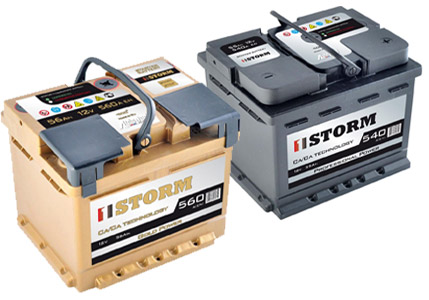
Answer: Characteristics of the original battery
Marking - 55D23L-MF :
Total height (with terminals), no more than, mm - 225 .
Container height.
no more, mm - 204 .
Width, no more, mm - 173 .
Length, no more, mm - 232 .
Capacity - 48 Ah .
Starting current - 300A .
Battery marking according to JIS standard.
Capacity no more than 60 A/h. The number 55 does not literally indicate the amp-hour capacity.
It is an integral characteristic that takes into account the capacitance and cold start current
Battery capacity refers to the amount of electricity that the battery releases when discharged. Capacity is measured in ampere-hours and is determined by the formula:
C = Ip X tp
where C is the battery capacity, Ah, Ip is the discharge current, A ; tp – discharge duration, hours. To compare different starter batteries, the concept of nominal capacity has been introduced.
This is the capacity that a fully charged battery should deliver in the prescribed discharge mode.
Typically, the nominal capacity is set in a 20-hour discharge mode at an electrolyte temperature of 25 degrees Celsius with a current of such magnitude that after 20 hours the voltage on a 12-volt battery drops to 10.5 volts.
So, if the capacity of a 12-volt battery in a 20-hour discharge mode is 90 ampere-hours, this means that when the battery is discharged with a current of 4.5 amperes at an electrolyte temperature of 25 degrees Celsius to a voltage of 10.5 volts, the discharge time will be at least 20 hours. From the formula it is clear that at 20 hours of discharge the capacity is greater than at 5 hours.
On domestic and many American and Korean batteries, the capacity is indicated at a 20-hour discharge, and on SUPER NOVA - at a 5-hour discharge.
46B24R(L) battery has a capacity of 36 ampere-hours after 5 hours of discharge, and 45 ampere-hours after 20 hours of discharge.
Below is a table that shows some data about SUPER NOVA .
|
Source: http://tcorolla-club.ru/texnicheskaya-dokumentaciya/frequently-asked-questions/kakie-parametry-shtatnogo-akkumulyatora/
Battery Toyota Corolla 1.4
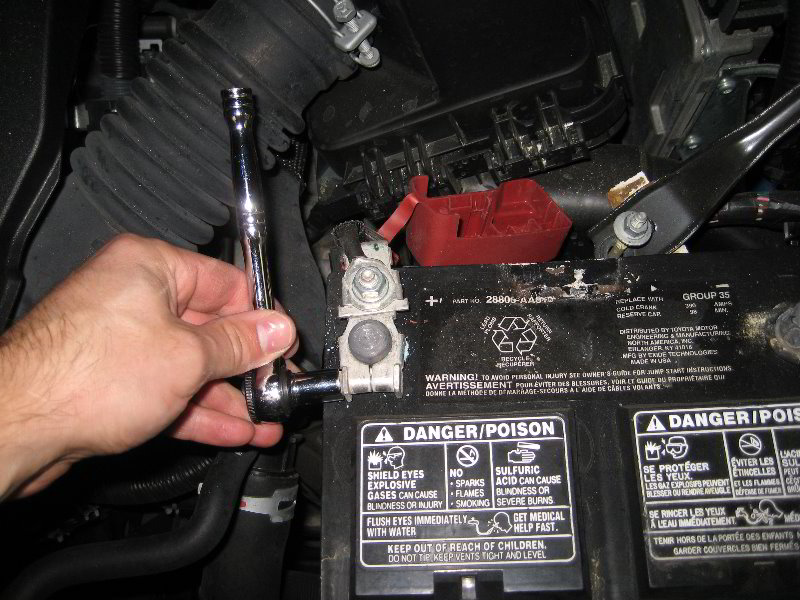
The battery for Toyota Corolla 1.4 is serviceable and maintenance-free. If you buy a battery for Toyota Corolla 1.4 with a starting current lower than that set by the manufacturer, the car simply will not start.
Accordingly, first of all you need to know the rated capacity and the value of the starting current. This can be seen either on the current battery, but it is better to check with our specialists.
If you are not the first owner of the car, then the battery may not be what you need.
The price for a Toyota Corolla 1.4 battery with a large number of Ah will be higher than for the same battery but with a smaller number of Ah. It is clear that the higher the number of Ah, the better, but only within the tolerance of the manufacturer.
When choosing a battery for Toyota Corolla, you must also pay attention to the battery size and polarity. You cannot buy a battery with the same parameters as yours, but from a different car. It will differ in size either larger or smaller.
The same applies to polarity: it is not always possible to install a battery with direct polarity in place of a battery with reverse polarity (pole terminal arrangement) due to the insufficient length of the wires.
In addition, pole terminals protruding above the surface of the cover may prevent the hood cover from closing.
Toyota Corolla battery cost:
Battery optionsBattery priceBuyToyota Corolla 1.4 battery up to 50 Ah.Battery Toyota Corolla 1.4 50-70 Ah.Battery Toyota Corolla 1.4 from 70 Ah.| from 3500 rub. |
| from 5000 rub. |
| from 6500 rub. |
Buy Toyota Corolla battery
Phone: 8 (812) (multi-channel, 10.00-20.00)
Whatsapp: +7 (911) 766-42-33
(chat only! From 10 a.m. to 8 p.m., closed on Sundays)
Viber: +7 (911) 766-42-33
(chat only! From 10 a.m. to 8 p.m., closed on Sundays)
Free delivery throughout St. Petersburg.
Delivery to regions from 2 days.
The cost of the battery depends on whether it is new or used, the condition of the used one, the manufacturer, as well as availability in our warehouse or delivery time to our store.
Battery rating based on owner reviews:
1. BOSCH (Germany) 2. Exide (USA-Japan) 3. Varta (Germany) 4. Berga (Germany)
5. Furukawa (Japan)
Serviceable and maintenance-free battery.
Which to choose? There is no big difference in service life and reliability between them.
A serviceable battery has a slight advantage - in the event of a battery failure, measuring the density of the electrolyte in the cells allows you to quickly and with high objectivity determine its cause: a defect in any cell, a deep discharge or an open circuit inside the battery. But most batteries these days are maintenance-free. We recommend buying and installing them.
The battery life is on average from 2 to 5 years. But in our climate, it can be significantly reduced.
When you need to buy a battery:
- after stopping the car engine, the light of the turned on headlights quickly fades; - the liquid in the cans has changed its original color and acquired a dark reddish tint; - a click when the starter is running, which appears in the ignition switch after turning the key;
– slow starter operation.
Source: https://automagia.ru/parts/electrical-parts/akb/toyota/corolla/corolla-e11-1.4-86


